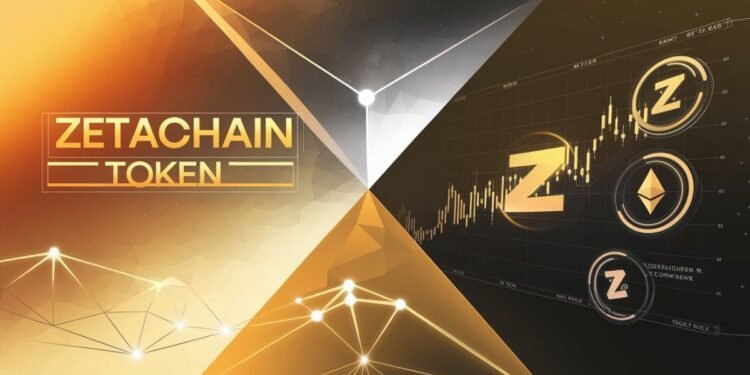ZetaChain’s market performance has seen significant fluctuations recently, particularly after the October 2024 token unlock. The ZETA token, key to ZetaChain’s cross-chain interoperability, is currently facing a downtrend, with its price dropping by approximately 20.5% over the past week and experiencing a further 4.8% decline within 24 hours. These market movements are influenced by increasing supply due to the release of vested tokens, affecting liquidity and price volatility.
ZetaChain Token Market Overview in 2024
ZetaChain’s market performance in 2024 has been marked by significant volatility, especially following the token unlock on October 1, 2024, where 13.43% of the token supply was released. This event has heavily influenced liquidity and price movements, with ZETA facing downward pressure across exchanges. Despite these fluctuations, ZetaChain’s cross-chain capabilities continue to solidify its place in the decentralized ecosystem, enabling seamless transactions across blockchains such as Ethereum, Bitcoin, and Cosmos.
Token Price Update and Market Performance Post-October Unlock
Following the October 1, 2024 unlock, the ZETA token experienced a 15.08% price drop over the past month and a 4.8% decline within 24 hours of the event. This price volatility was expected as the sudden influx of tokens led to an oversupply, further amplified by cautious investor sentiment. The circulating supply of ZETA has increased by a notable margin, with less than 12% of the total supply still in circulation.
| Exchange | Price | 24H Trading Volume |
|---|---|---|
| KuCoin | $0.54 | $35.5M |
| OKX | $0.54 | $3.88M |
| Binance Futures | $0.54 | $15.68M |
These changes highlight the market’s mixed response, where trading volumes remain relatively high, but selling pressure continues to push the price lower.
Implications of Token Unlock on ZETA’s Market Position
The October 1 unlock, which released 13.43% of ZETA’s total supply, has had profound implications on the token’s liquidity and market dynamics. This unlock triggered a period of heightened trading activity, leading to increased market uncertainty. The following checklist summarizes key metrics that investors should track:
- Market Cap Changes: With more tokens in circulation, ZETA’s market cap has fluctuated, currently standing around $263 million.
- Liquidity Pool Activity: A surge in liquidity was observed, but it has been coupled with increased selling pressure.
- Investor Response: Sentiment remains cautious, as investors monitor the token’s stability post-unlock.
ZetaChain’s Role in Cross-Chain Interoperability
ZetaChain has emerged as a critical player in solving blockchain’s interoperability challenge. It provides seamless cross-chain interoperability, allowing decentralized applications (dApps) to operate across various blockchain ecosystems. Unlike traditional methods, ZetaChain enables native asset transfers without needing wrapped tokens, which simplifies the process for users. This capability is especially relevant for ecosystems like Ethereum, Bitcoin, and Cosmos, making it a robust tool for developers aiming to build interconnected dApps.
Omnichain dApps and Cross-Chain Messaging
Developers are increasingly leveraging ZetaChain’s messaging capabilities to build omnichain dApps (odApps). These applications can perform cross-chain transactions involving multiple blockchains in one unified step. For instance, a smart contract on Ethereum can interact with Bitcoin or Cosmos seamlessly. This feature is particularly useful for DeFi platforms, gaming, and other decentralized apps that benefit from real-time data and asset transfers across networks. By abstracting the complexities of multi-leg cross-chain transactions, ZetaChain provides developers with the tools to create more fluid and efficient blockchain applications.
ZetaChain’s Staking and Validator Incentives
ZetaChain employs a Proof of Stake (PoS) model to ensure security and decentralization. Validators stake ZETA tokens to secure the network, earning rewards in return. This mechanism not only secures the blockchain but also incentivizes participation, making it a robust system for maintaining network integrity. The validator incentives are designed to promote long-term commitment to the network, transitioning from fixed rewards to inflationary incentives, aligning with the overall ZetaChain staking rewards model. Additionally, the threshold signature scheme (TSS) used by ZetaChain ensures that no single node controls private keys, adding another layer of security.
Related Topics:
ZetaChain stands out in the blockchain ecosystem by offering seamless cross-chain interoperability and innovative features like omnichain dApps, native asset transfers, and a strong staking rewards system. Its approach to solving blockchain fragmentation places it at the forefront of blockchain development. As more developers leverage ZetaChain’s unique capabilities, its role in creating a unified Web3 will only expand, making it a key player in the future of decentralized technology.






